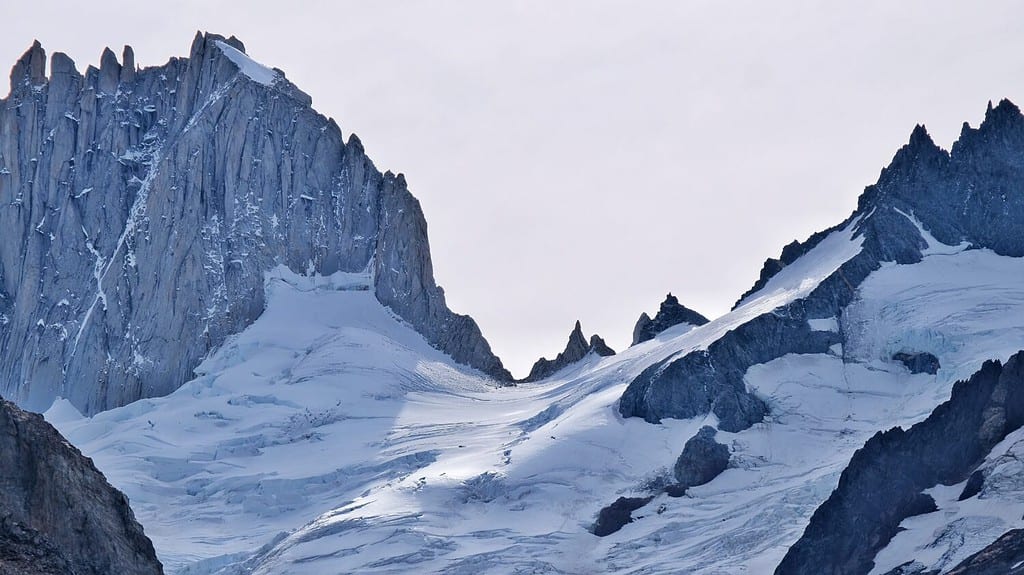The magnificent Andes Mountain Range stretches along the western coast of South America, passing through Venezuela, Columbia, Ecuador, Peru, Bolivia, Chile, and Argentina. In all, it covers over 5000 miles. It is an area of extremes – extreme beauty, extreme height, and, in some places, extreme cold. But how cold are the Andes Mountains, and how does it impact the people who live there? We examine the most extreme temperatures and snowfall that the mountain range experiences.
When considering climate, The Andes can be divided into three parts. The northern Andes extends roughly through Bolivia, Venezuela, and Ecuador and is dominated by volcanic peaks of over 16,000 feet. The central Andes extends through Peru and Chile and is home to the range’s two large lakes, one of which is Lake Titicaca. It can be divided into two regions, one inside the tropics and the other below the Capricorn Tropic line. Finally, the southern Andes extends from the tip of South America through Chile and Argentina. This area is further divided into the Andes de Transición, the Patagonian Andes, and the Antartandes. The very highest peaks are found in the Andes de Transición, sometimes called the ‘roof of the Andes’.
What Is the Climate of the Andes?

There is no single Andes climate – the terrain and topography are so variable.
©Thousand Travel Tales/Shutterstock.com
The Andes cover such a vast area, and the terrain is so variable that it is impossible to describe a single Andes climate. However, in general, it has a mountain climate. The northern Andes are rainy and warmer, the southern Andes are rainy and cold, and the central Andes are drier. Areas close to the Pacific Ocean are influenced by winds and precipitation from the sea, whereas many of the summits have constant snow cover.
In general, the higher and further south you travel, the colder it is. The coldest average minimum temperature occurs in July and is -5 0C, which is 230F. But it is important to understand that this is just an average.
How Cold Are the Central Andes?
The extremes of cold and snow are recorded in the central Andes. The central Andes experience a rainy season between January and March and a dry season between April and December. The rain that falls at lower elevations turns into snowstorms in the mountains. In the mountains close to the Atacama Desert, temperatures can plunge to -400C, and in the desert itself, they frequently drop to -250C (-130F). The central Andes also have the largest areas of snow.
Extreme snow events have also been recorded in the central Andes. In August 2023, the Portillo area in the Chilian region experienced what locals called ‘the storm of a decade’. It dropped 27.5 inches in 24 hours and over 59 inches in four days. Meanwhile, Las Lenas, a ski resort in the Argentinian Andes, received over 98 inches, effectively burying the resort!
Effects of Extreme Cold in the Andes
In the central Peruvian Andes, radiative frosts (frosts caused by overnight heat loss from the Earth’s surface) are a hazard to people, crops, and animals. They are caused by low cloud cover, surface air humidity, and soil moisture. They tend to occur at night and during the austral summer. Intrusions of air mass make things worse in some regions.
Between 2007 and 2010, The Andes experienced an extreme weather episode. For communities living at altitudes of 15,400 feet in the Peruvian central Andes, this made everyday life a struggle. It also affected Argentina and Uruguay. The people living in these areas were used to the toll that living at such high altitudes can take. However, for four years running, winter came early, pushing them to the limits of what they could endure. The region is already deprived – with 80 percent of families subsisting below the poverty line.
Temperatures plummeted to -240C, or 130 below zero Fahrenheit, and continued for weeks. The winter effectively started three months earlier than normal. Bean harvests failed, cattle started to die, and the toll on children was very serious.
During 2010, temperatures were lower than they had been for 46 years, contributing to the deaths of hundreds of children.
What Causes Extreme Weather in the Andes?
The mountain range’s altitude, proximity to the sea, and unique topography all contribute to the extremes of cold and snowfall. However, scientists suspect that climate change is also playing a part in recent weather events.
Ironically, global warming may be making the Andes Mountains colder. The complex atmospheric changes caused by climate change can lead to extremes of heat and cold. It’s a stark reminder that the effects of global warming are very hard to predict and often affect the most vulnerable communities.
Thank you for reading! Have some feedback for us? Contact the AZ Animals editorial team.








